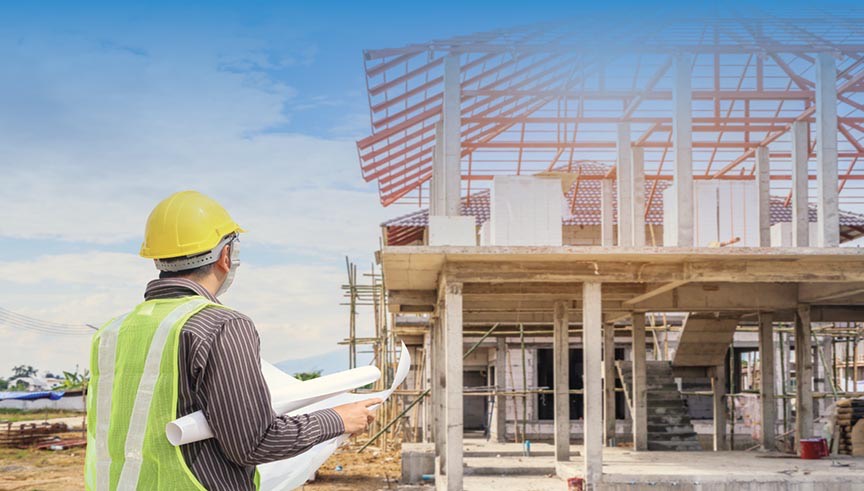Property owners are always surprised when they’re told they’ll need to obtain builder’s risk insurance. Our Los Angeles commercial construction pros have noticed that many people we talk to know very little about builder’s risk insurance. They’re also confused as to why they need to pay for it – confusing it with either their or the contractor’s general liability policy. We thought this blog post might be a helpful resource in breaking down what builder’s risk insurance does and doesn’t cover, how it differs from general liability insurance, and benefits all parties. We’ll also provide some tips as far as to what to look for in a builders risk policy.
DIFFERENCE BETWEEN BUILDER’S RISK INSURANCE & CONTRACTORS GENERAL LIABILITY
Builder’s risk insurance covers the contractor’s materials and equipment, as well as property related to the building under construction.
Comparatively, a contractor’s general liability covers risks in regard to any bodily injury or property damage. It will not cover the contractor’s property or equipment.
Builder’s risk insurance covers property or equipment at the construction site throughout the duration of a construction project. This project can be anything from building a new home or commercial structure to a residential/commercial remodel, renovation, or tenant improvement.
Coverage generally lapses upon the project’s completion. However, until the project is finished, coverage can be applied to anything from the structure to building materials on-site, landscaping, fencing, scaffolding, and temporary structures – including collapsed shoring damaged from any of the following events:
- Fire
- Wind
- Theft
- Lightning
- Hail
- Explosion
- Vandalism
Coverage can also be applied to damage from accidents during construction. For example, coverage to repair or replace a sprinkler line that is hit during tenant improvement construction.
Standard exclusions in a builder’s risk insurance policy are things like earthquakes, employee theft, mechanical breakdown, and water or weather-related damage.
The great thing about a builder’s risk insurance policy is it can complement a liability policy’s bodily injury and property damage coverage – offering more protection to all parties against a wider range of risks.
KEY CONSIDERATIONS IN BUILDER’S RISK CONSIDERATIONS
Both parties in a construction contract need to be mindful of the following considerations:
- Who Is Obtaining the Policy: This burden is typically placed on the owner in most standardized contracts. Occasionally, depending on the scope of the project, the contractor might be best positioned to get the owner a better policy with a more competitively-priced premium.
- Who Are the Named Insureds?: Generally, everyone from the owner to the contractor, subcontractors, and suppliers should be listed as named insureds.
- What Is the Duration of the Policy?: A typical builder’s risk insurance policy will expire at a defined point once the project has been substantially completed. Since this policy is only in effect throughout the construction, it’s sometimes referred to as a “course of construction” insurance policy. The point of completion could be anything from when a certificate of occupancy is issued to when the project is finally completed to the owner’s satisfaction with no improvements or further changes requested. The owner needs to make sure their property insurance kicks in at the property’s new post-construction value before the builder’s risk policy lapses.
- What Are the Provisions?: Many types of builder’s risk policies include provisions – for instance, a common provision might be the policy won’t pay for project delay damages brought on by a covered loss. For example, say a building flood occurs when a backhoe hits a plumbing pipe. A builder’s risk policy would cover the pipe repair but might not cover the costs of a lengthy delay caused by the incident. Be sure to carefully review your policy.
- How Broad is Your Builder’s Risk Policy?: Builder’s risk insurance policies are typically either “all risk” (covering any loss besides specific exclusions named in the policy) or “named peril” (covering only losses specifically named in the policy). Understand that “all risk” doesn’t necessarily mean unlimited coverage. There may still be exclusions for uninsurable losses or losses more appropriately covered by professional liability coverage instead of a builder’s risk plan.
- Will You Need a Builder’s risk Insurance Extension?: It’s important to look over your policy to determine if builder’s risk insurance coverage extensions are necessary. Extensions may be required to cover losses if property or equipment is damaged in transit to the construction site, debris removal resulting from a covered loss, and sewer and drain backup. It should also be noted that builder’s risk policies generally don’t reimburse for financial losses tied to business interruption or loss of use. Business owners unable to handle such a financial hit should seek a policy endorsement to cover financial losses attributable to a project delay.
HAVE A LOS ANGELES AREA TENANT IMPROVEMENT OR COMMERCIAL/RESIDENTIAL CONSTRUCTION PROJECT?
H.W. Holmes, Inc. are experienced residential and commercial construction professionals servicing the Los Angeles area. We specialize in everything from new builds to tenant improvements and renovations. Have a project that you’d like to discuss? Contact us today at (805) 383-9929 or complete our online contact form to get the process rolling.

